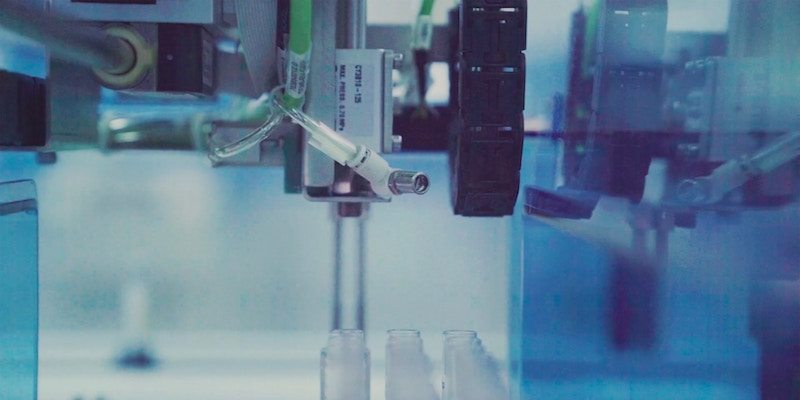As the digital era matures, the capabilities of Laboratory Informatics and Materials Informatics to revolutionize Research & Development (R&D) operations are growing in prominence. Both informatics types serve as vital cogs in the R&D machinery, and their overlapping yet distinct roles are integral to the innovation lifecycle. Understanding these roles will help organizations optimize their operations and maximize the value derived from a structured data system.
This article provides a comprehensive overview of Materials and Laboratory Informatics to help R&D leaders better understand and ensure their R&D organization is equipped with a robust solution that can sustain, maintain, and exceed the modern demands of innovative, future-proof laboratories.
Table of Contents
- What is Laboratory Informatics and Materials Informatics?
- The Distinction between Laboratory and Materials Informatics
- Complementary Allies in R&D
- The Power of a Structured Data System
- A Unified Platform for Laboratory and Materials Informatics
- Harnessing the Power of Informatics with Uncountable
1. What is Laboratory Informatics and Materials Informatics?
At the heart of this conversation are two forms of data-driven sciences: Laboratory Informatics and Materials Informatics.
- Laboratory Informatics: This refers to the specialized application of information technology aimed at optimizing and extending laboratory operations. It includes data acquisition, data processing and management, lab networking, data analysis, and knowledge management. Laboratory Informatics tools often include Laboratory Information Management Systems (LIMS), Electronic Laboratory Notebooks (ELNs), Laboratory Execution Systems (LESs), and Scientific Data Management Systems (SDMSs).
- Materials Informatics: This is a specialized field of informatics that focuses on applying data-driven techniques to materials science and engineering. It uses machine learning, pattern recognition, data mining, and computational modeling techniques to design, discover, and optimize materials. Materials informatics is used to accelerate the process of finding and fine-tuning new materials for specific applications and to understand the properties of existing materials better.
2. The Distinction between Laboratory and Materials Informatics
While both domains employ informatics and data-driven approaches, the key distinction lies in their primary focus.
- Laboratory Informatics typically concerns operational optimization - maximizing lab productivity, efficiency, and data integrity. It is the bedrock upon which labs rely to manage and process their data, optimizing tasks from inventory management to sample tracks to protocol automation.
- Materials Informatics, on the other hand, tends to focus more on the scientific discoveries themselves. Its techniques predict material properties, accelerate discovery, and improve development efficiency. It aims to extract actionable insights from complex material data, often leveraging machine learning and artificial intelligence.
3. Complementary Allies in R&D
Laboratory and Materials Informatics can be seen as two sides of the same R&D coin - while they have their focuses, one complements the other.
In a well-integrated system, Laboratory Informatics generates structured, quality-controlled data which can be used as input for Materials Informatics applications. This integration results in a robust pipeline for material discovery, development, and deployment.
On the other side, insights and predictions generated by Materials Informatics can be operationalized within the lab environment via Laboratory Informatics systems. For instance, predictions about material properties can be used to guide experiments, which are then planned and executed using ELNs or LIMS. The data from these experiments then gets fed back into the materials models, creating a virtuous cycle of data generation and insight extraction.
Organizations stand to gain significantly by integrating Laboratory Informatics and Materials Informatics into their R&D software portfolio. Leveraging these technologies can enhance lab efficiency, accelerate material discovery, improve product quality, and reduce time-to-market.
In this data-driven era, integrating Laboratory Informatics and Materials Informatics is no longer a luxury but a necessity. By understanding their distinct roles, overlapping capabilities, and the power of structured data systems, organizations can unlock their true potential, leading the way toward a brighter and more innovative future.
4. The Power of a Structured Data System
Central to the success of both Laboratory and Materials Informatics is a structured data system. Unstructured data is one of the biggest challenges faced by R&D organizations - it's hard to search, analyze, and leverage. A well-implemented structured data system, however, brings order to chaos, enabling organizations to capture, manage, and analyze their data efficiently. This structured approach enhances the interoperability between different systems, such as between ELN, LIMS, and SDMS, and serves as a solid foundation for both Laboratory and Materials Informatics.
5. A Unified Platform for Laboratory and Materials Informatics
In the world of R&D software, the need for a centralized platform combining the strengths of Laboratory Informatics and Materials Informatics is growing. Recognizing this, Uncountable has emerged as a leading solution provider, offering a comprehensive platform that amalgamates these functionalities.
Uncountable's platform brings the operational efficiency of Laboratory Informatics and the discovery prowess of Materials Informatics under one roof. It provides a complete ecosystem for R&D, housing various features such as ELNs, LIMS, and SDMS, while incorporating sophisticated machine-learning capabilities that support material discovery and development.
The Uncountable platform has been designed to streamline data management across the R&D lifecycle. Its structured data system enables efficient capture, management, and analysis of data, thereby enhancing interoperability between different systems and facilitating seamless data flow.
By facilitating collaboration, promoting data transparency, and improving decision-making, Uncountable provides a potent tool for organizations seeking to accelerate their R&D efforts. Its platform not only brings together Laboratory and Materials Informatics but also enhances their value, creating a dynamic duo that powers R&D success.
6. Harnessing The Power of Informatics with Uncountable
Uncountable empowers organizations to harness the combined power of Laboratory and Materials Informatics. Its integrated solution aids in managing lab operations, expediting material discovery, improving product quality, and reducing time-to-market.
The platform's inherent capability to handle structured data makes it a versatile tool for any R&D organization. By integrating data capture, management, and analysis, Uncountable enables organizations to unlock their true potential and lead toward a brighter, more innovative future.
In conclusion, integrating Laboratory Informatics and Materials Informatics is a critical need in today's data-driven era.
Uncountable's software is built specifically to encompass and harness the power and capabilities of both systems within a single cloud-based platform. Uncountable’s platform provides world-leading organizations with a comprehensive, structured, intuitive system to drive their lab and innovation efforts. For those ready to embrace the future of R&D, Uncountable provides the toolkit to make that future a reality. Book a free demo and see for yourself!











